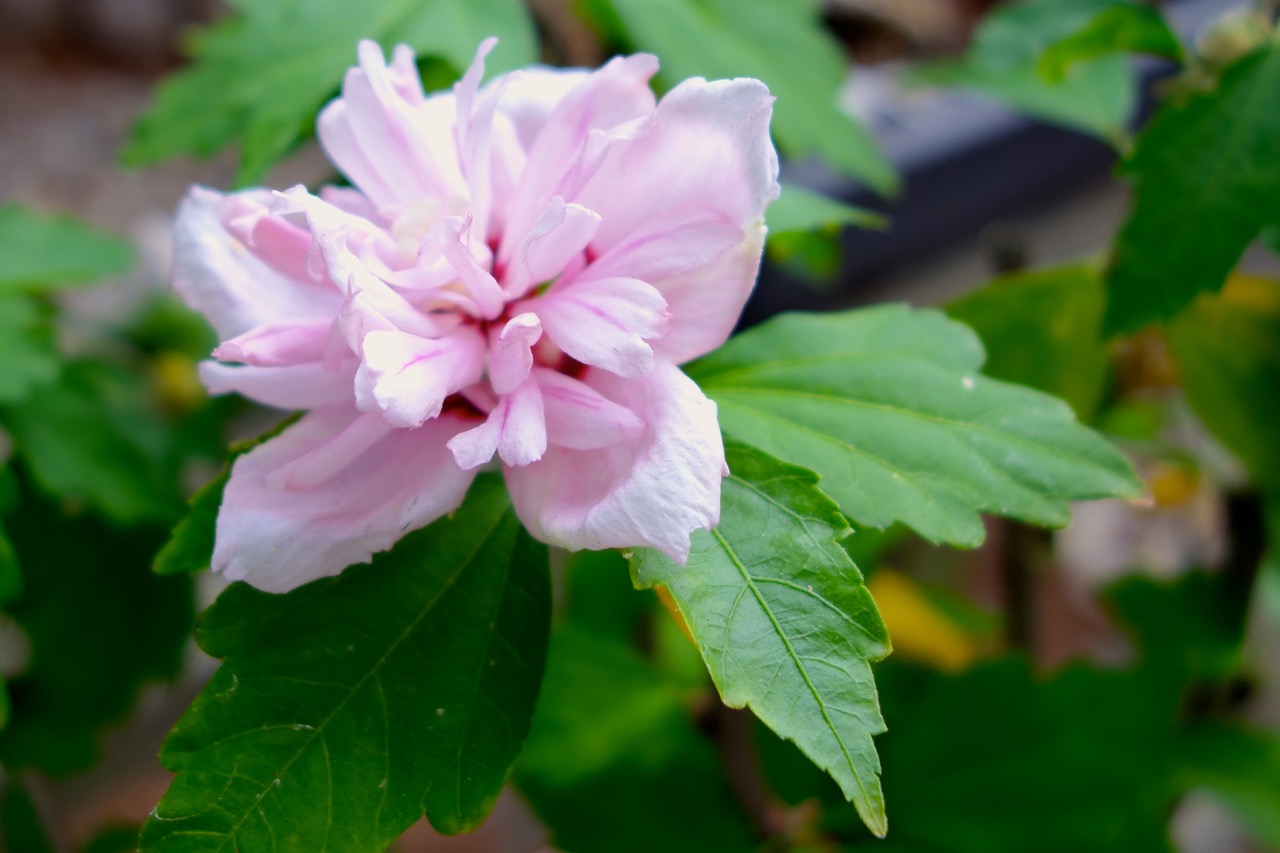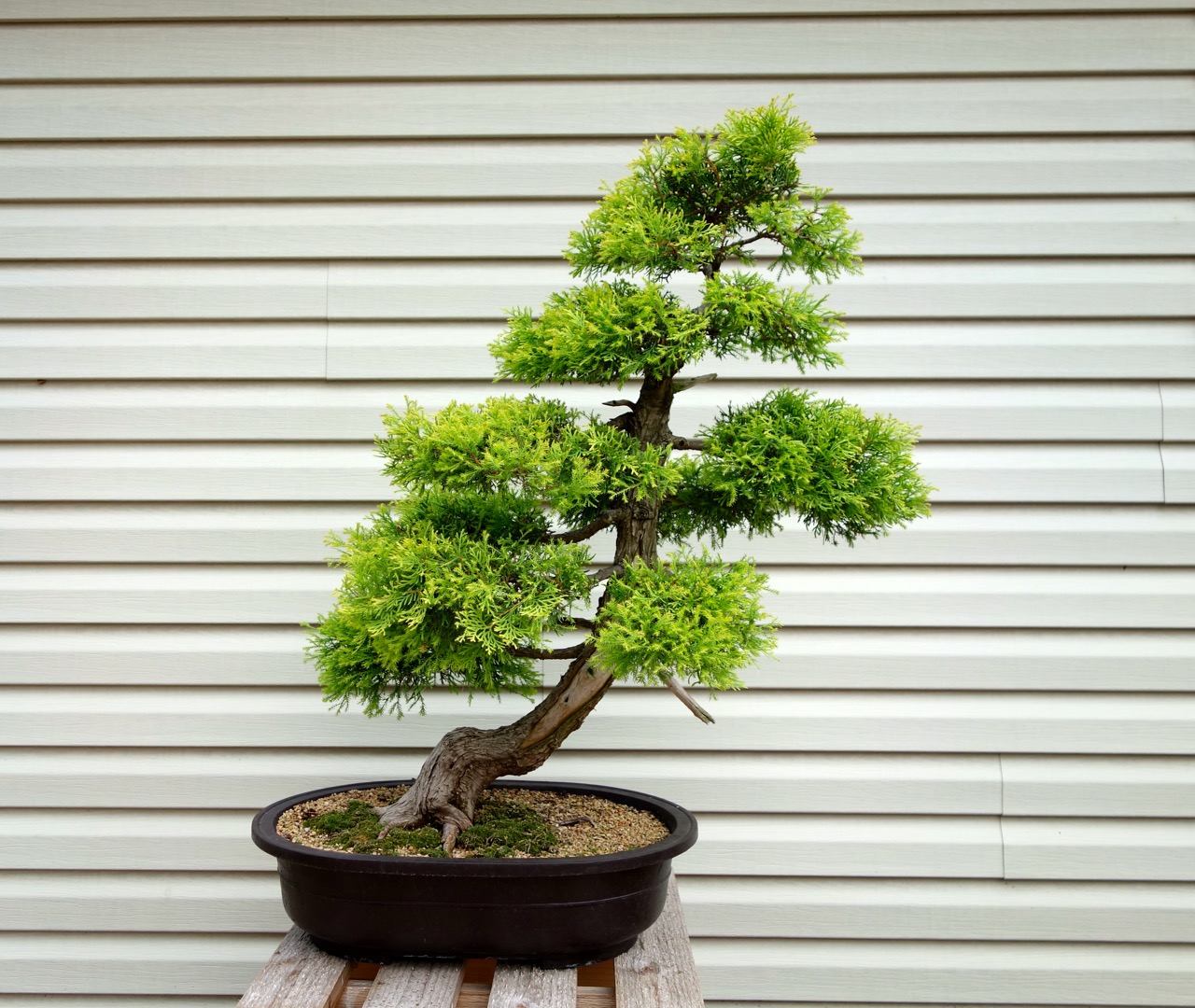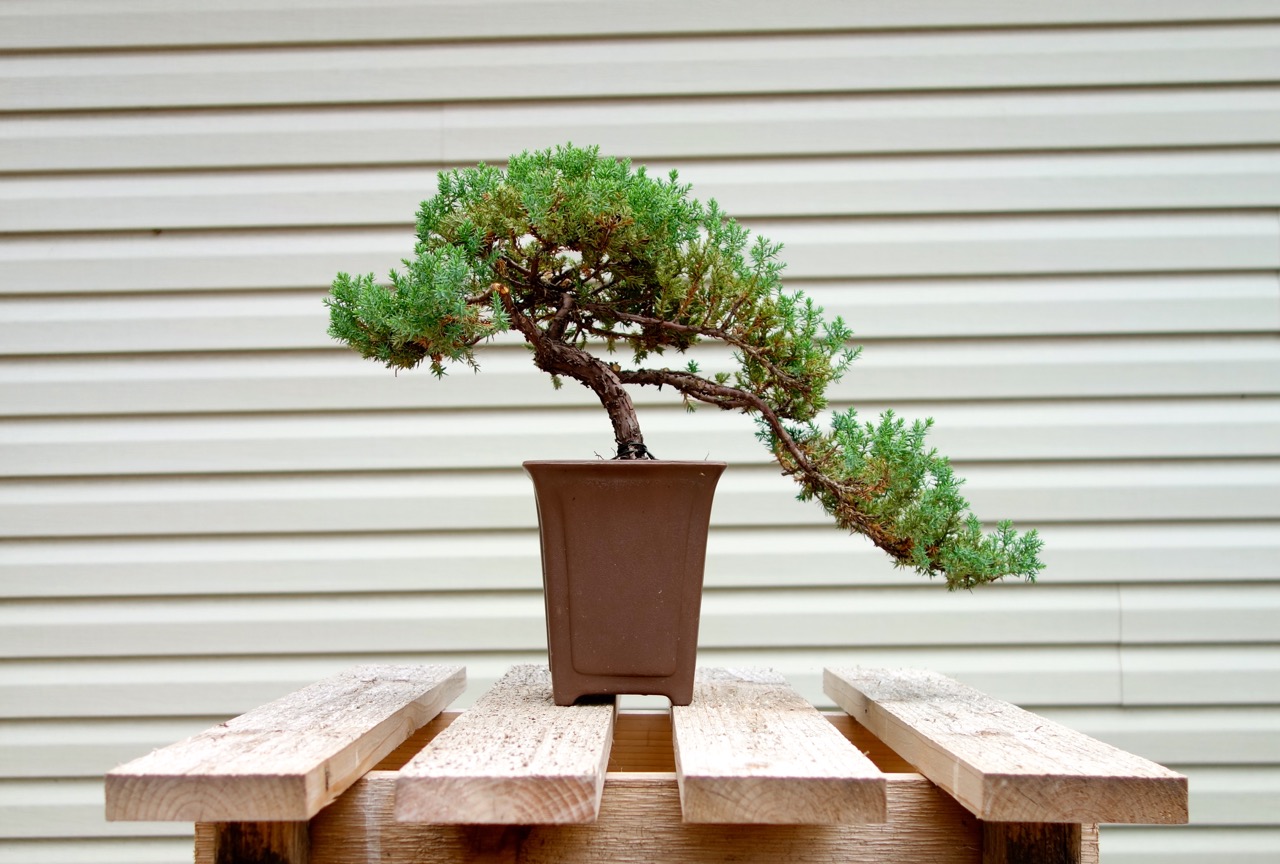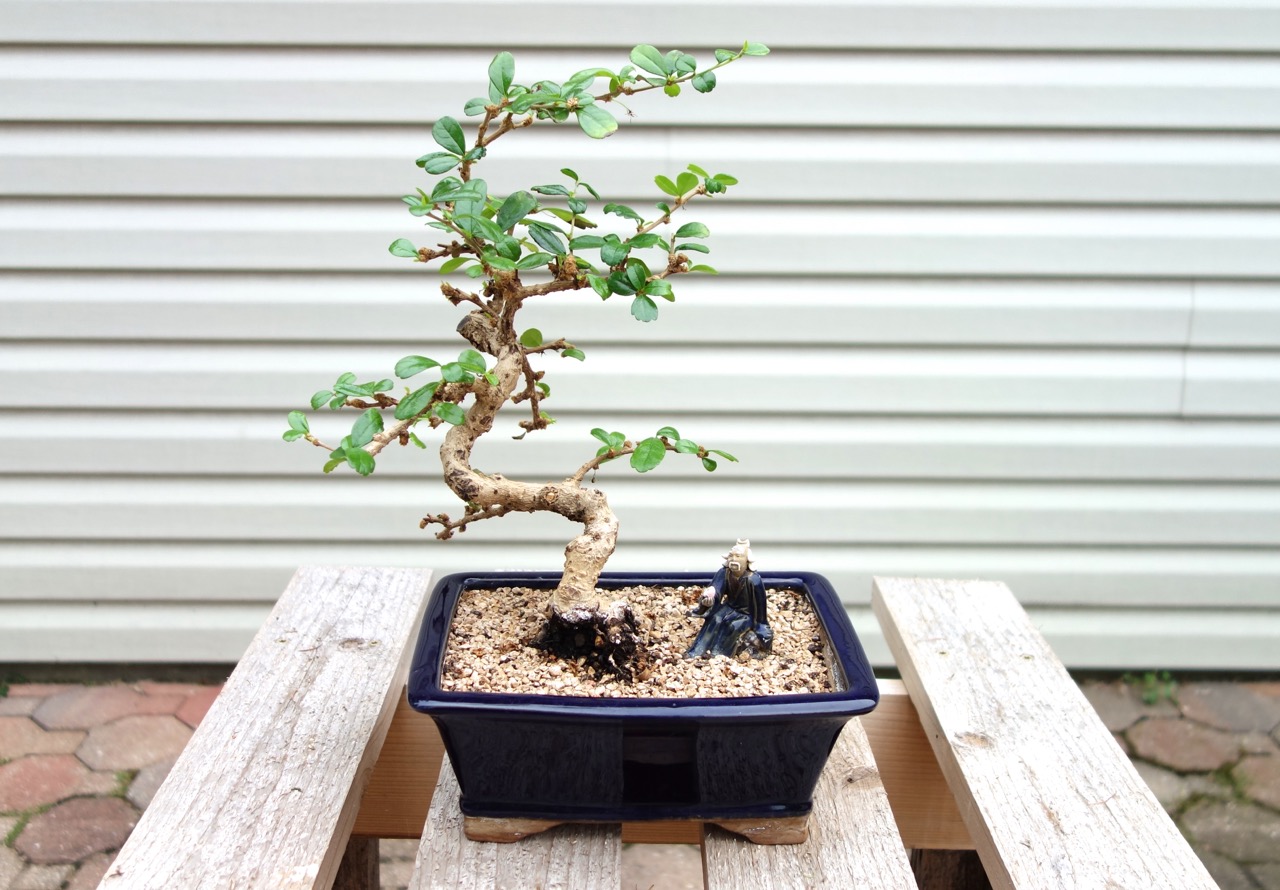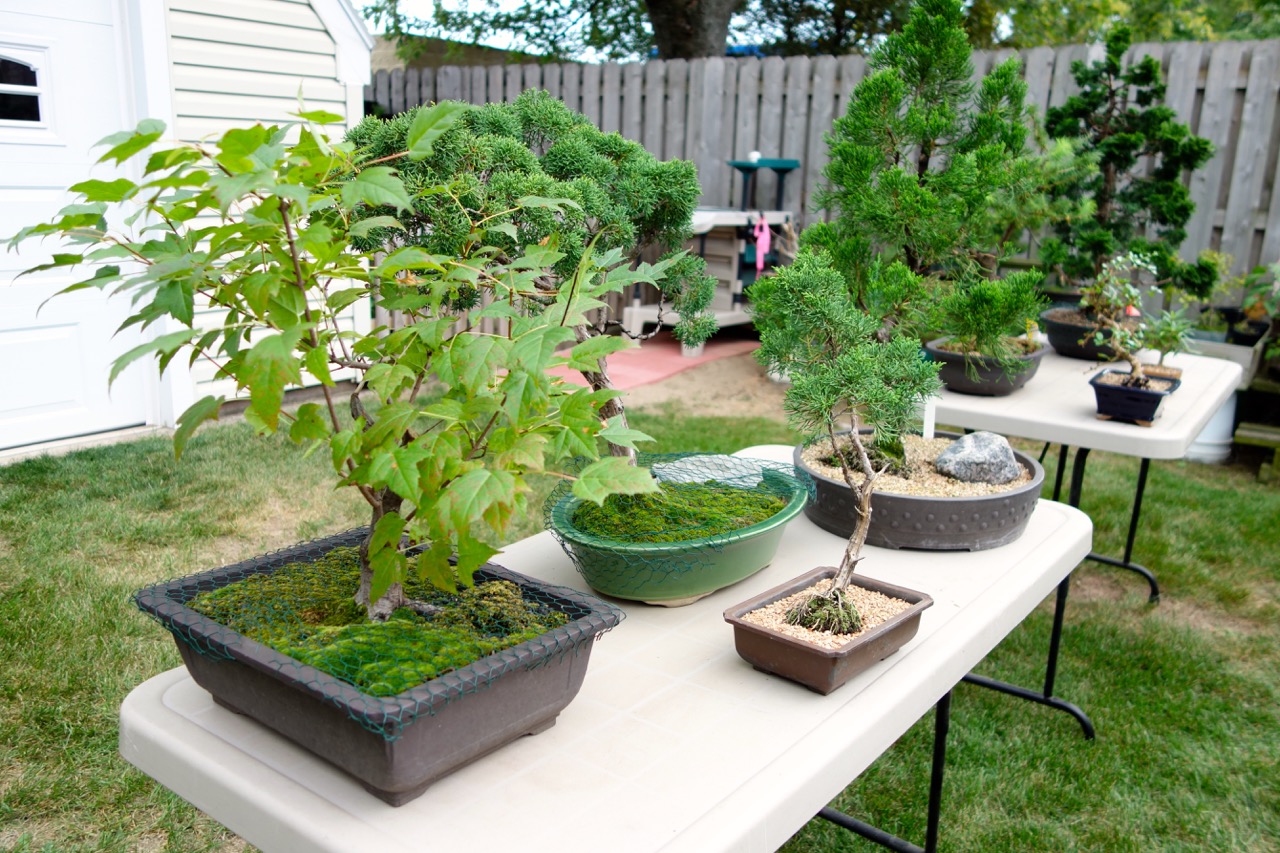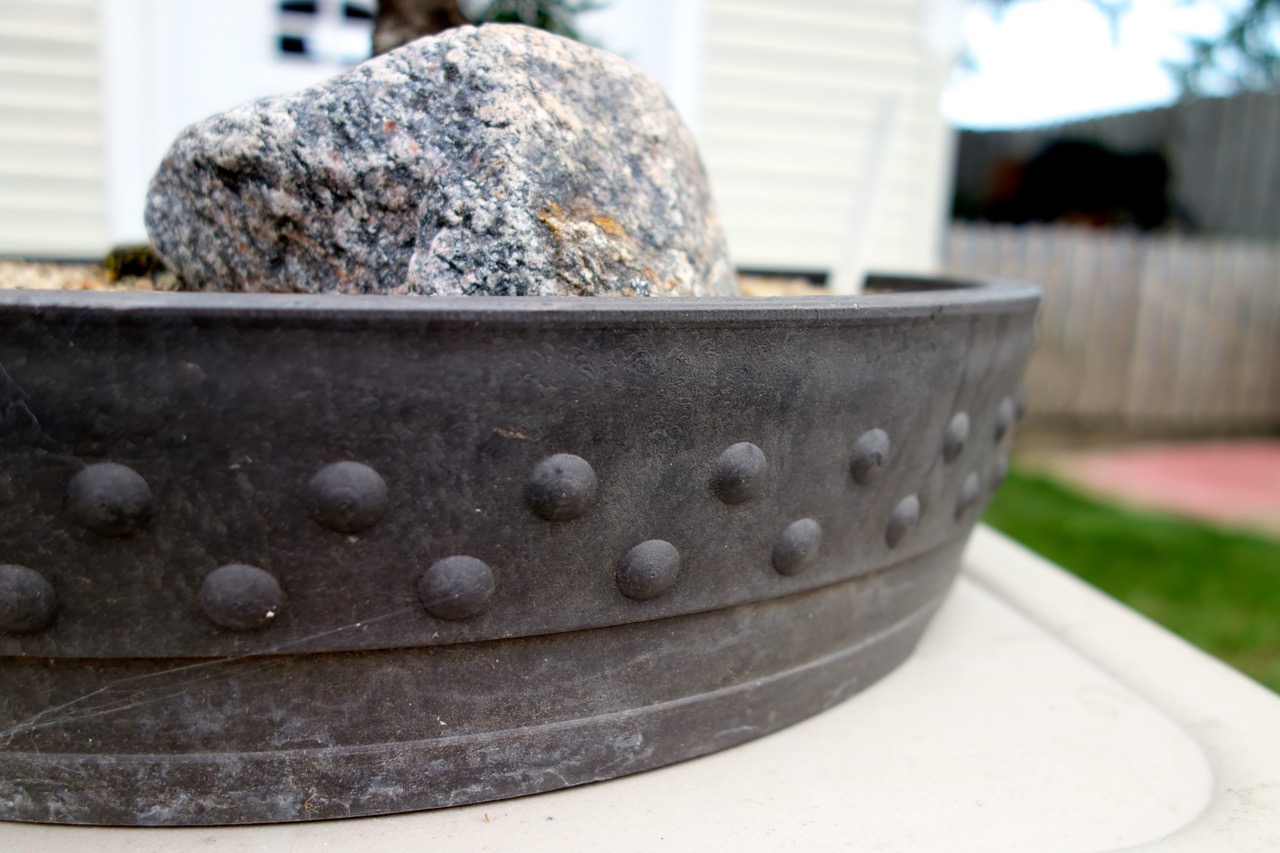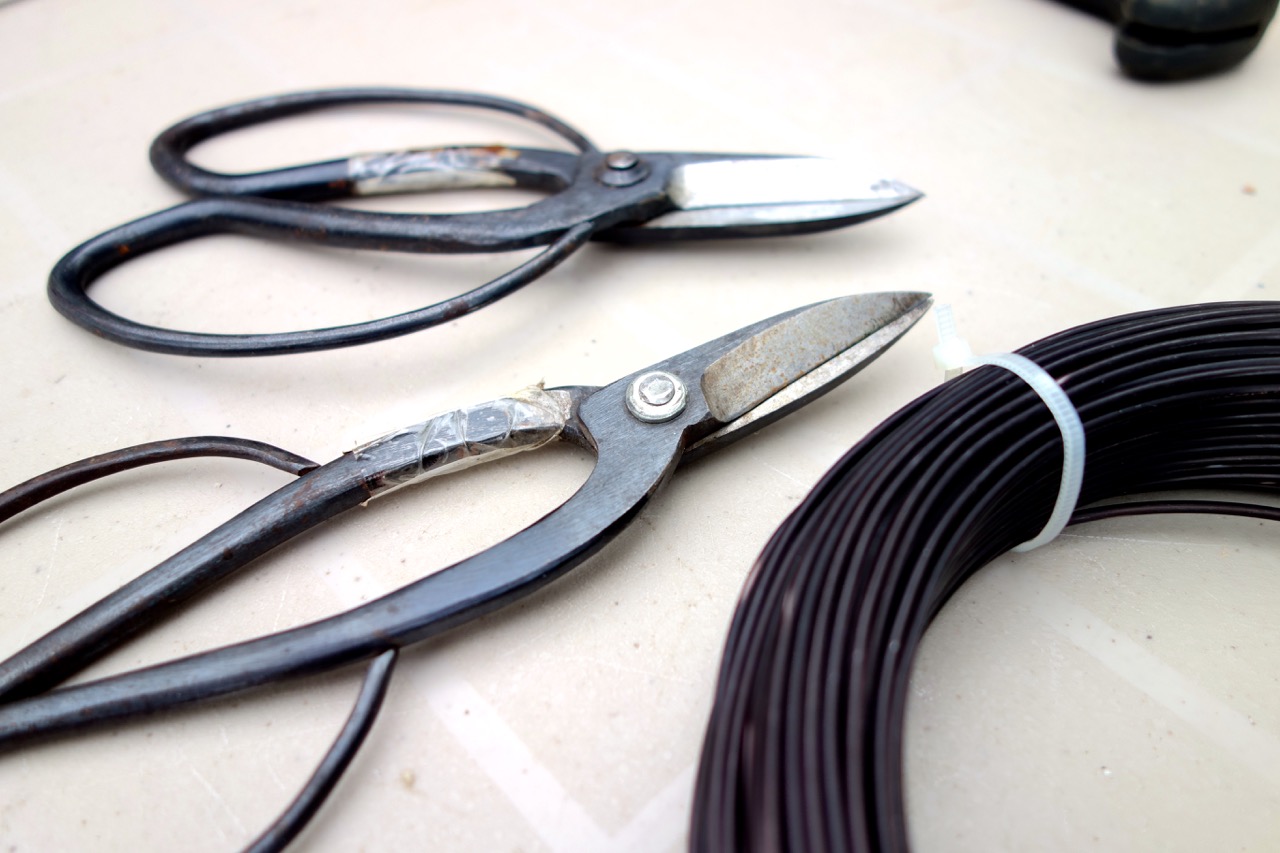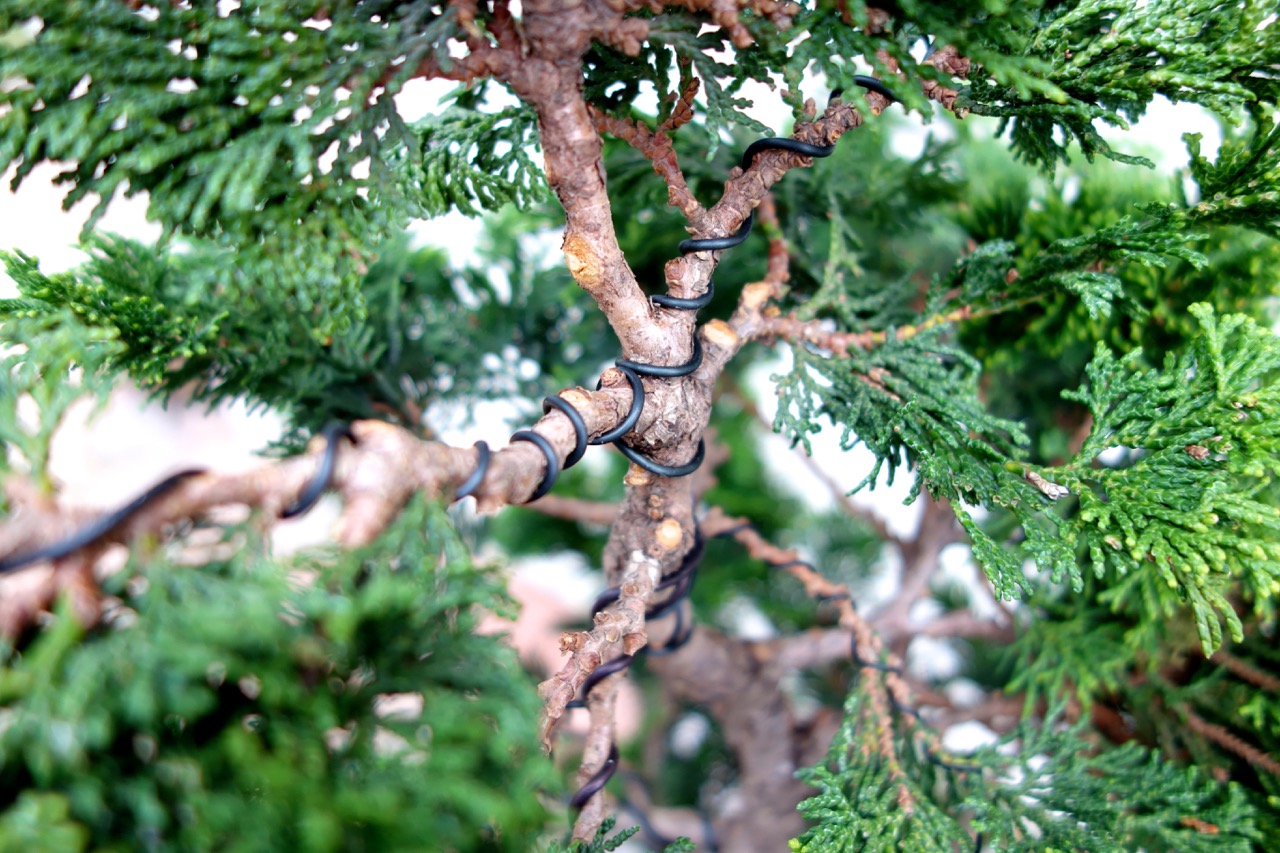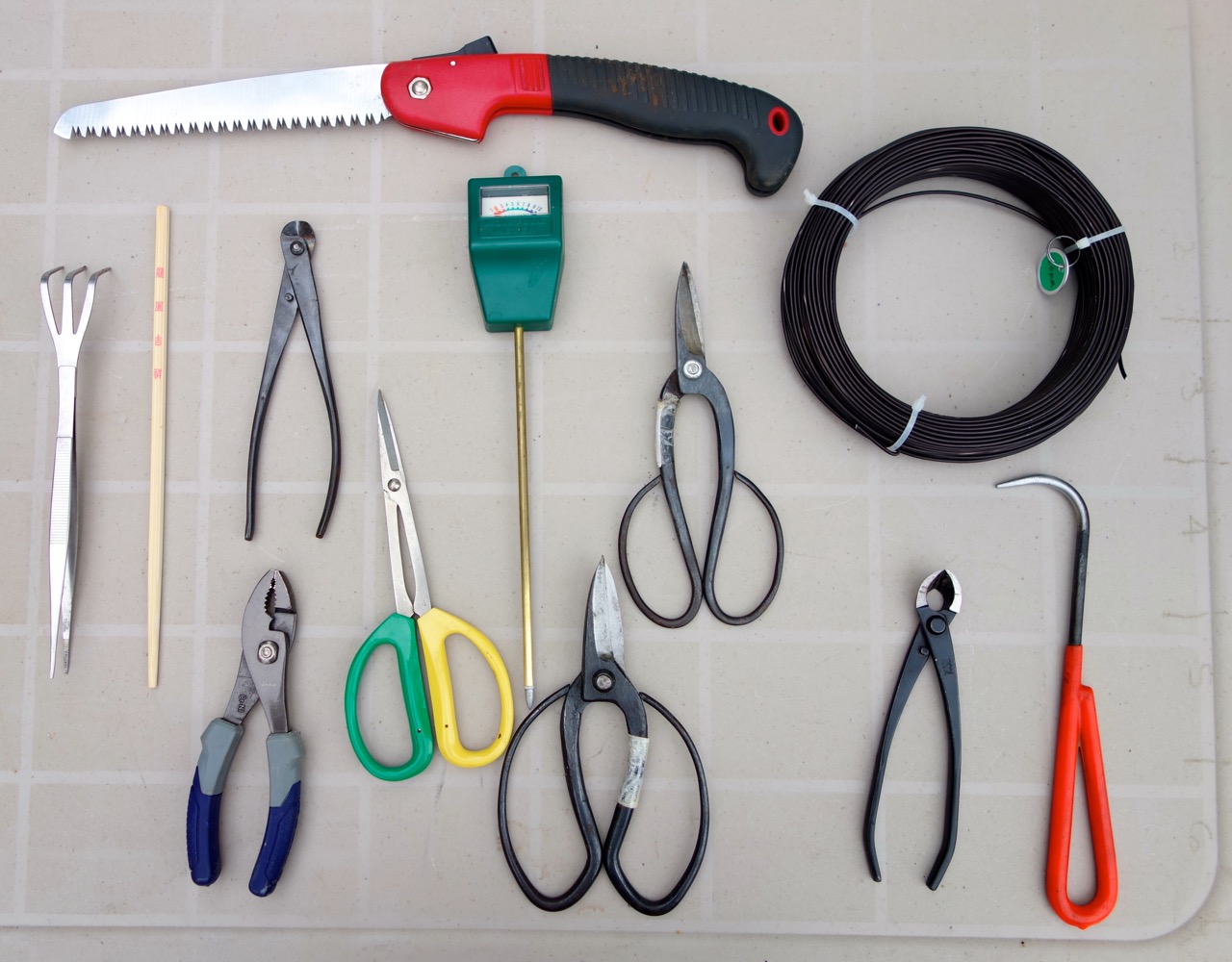Old trees have a majestic quality. We admire their strength; we appreciate their shelter; we wonder about all the things they have witnessed over their long lives. “We all love trees, old trees have meaning. So what if you could grow a tree in the palm of your hand? How amazing is that! That is what bonsai is about,” said LeRoy Frahm, a founding member of the Fox Valley Bonsai Society.
The Chinese antecedent to bonsai, called penjing, incorporates figures and structures. Here a man holds a pomegranate - a symbol of fertility. Note how the figure reinforces the scale of the trunk in the background.
I recently had the chance to check out some members’ trees and to learn more about this ancient art; their enthusiasm for bonsai was infectious.
Thousands of years ago, Buddhist monks refined the practice in China – known there as penjing or tray landscape. Penjing guide books published in the 1600’s helped make it a popular pastime. Monks brought techniques to Japan where it is known as bonsai or tray planting. General US interest has grown over time: in the 1900’s when Japan opened up to the West, in the 1940’s during World War II, and in the 1970’s when China restored relations. Society president, Donald LaCount explained, “Bonsai trees symbolize harmony, honor, patience and happiness. They are the perfect addition to a relaxing environment. The Society’s charter is about making bonsai accessible and helping people get started.”
I could relate to recent member Tom Wentzel’s comment: “Given its history, I had a lot of misconceptions about bonsai - found it intimidating.” Wentzel added that“members of the Society have been great teachers. Bonsai has been a real pleasure to get into.”
Artists strive to create the illusion of age. The “root over rock” style is highly sought after. This ficus is over 18 years old.
When Frahm was a child, he became intrigued by bonsai after he came across some photos at the back of a garden magazine. At the time there weren’t library books he could reference, so he just started to experiment. “We were inspired to form the Society in order to create a support group. We needed to understand the nuances of our zone – to get information not in any book. It’s about having fun as a community.”
Bonsai is a hands-on activity. While successes make it worthwhile, practitioners need to be prepared for losses as well. The group agreed that “the first goal of successful bonsai is to keep it alive. Sometimes a plant will die a long slow death; other times a perfectly healthy plant will die without a clue. Every year the Society has a ‘best-looking dead bonsai contest.’ We have a good laugh and learn from each other.”
Frahm advises gardeners to start by experimenting with cheap plant material, then move up to more expensive plants. “It’s common to see people start out with an expensive tree and then to have it die. That can be depressing and will scare most people off.”
Since nearly any perennial woody-stemmed tree or shrub can be trained, it is most important to match your choice of plant to its environment. The most popular choice is ficus. Frahm elaborated, “they are user-friendly and have lots of leaf variety. And coleus is great to practice leaf reduction.” Members’ collections include cypress, juniper, maple, mini-jade, and lilac. “Look for plants that match your lifestyle. If you travel in the winter, you’ll want to stay with native trees that go to sleep in the winter. Tropicals can be kept inside all year.”
When choosing a plant it is critical to examine it carefully. Frahm urged, “You’ll want to look for a trunk that tapers to the top and a branch structure that mimics a mature tree. If you see a reverse taper, run away! And don’t be distracted by pretty leaves.”
Fox Valley Bonsai Society members combine a clear joy for the art with a reassuring confidence that anyone can do it. My talk with them left me excited to give it a try.
There is no better time than now. The Fox Valley Bonsai Society will be demonstrating how to train a bonsai from nursery stock at their annual show on October 1. I hope to see you there! Follow the Society on their Facebook page.
Fox Valley Bonsai Society member trees continue an ancient tradition that started in China. Here we see tray landscapes in The Humble Administrator’s Garden in Suzhou, China. This garden dates back to 1509.
See post as it appeared in The Post-Crescent.


